The Elephant Ear plant makes a large stunning statement plant indoors or outdoors. Elephant Ears plants are lush tropical bushes that are found in three different genus.
The Elephant ears in Colocasia and Alocasia genus are native to Southern Asia, Malaysia, Australia and the Pacific Islands. Elephant Ear from Xanthosoma genus are actually native to the tropical areas of America.
These leafy bushes grow on long elegant stems with huge arrow or heart shaped leaves that can measure up to two to three feet.
All three genus of Elephant Ears plants need a big area to properly display themselves. But what show stopper plants. They can also be grown outdoors as a patio plant, annual or sensitive perennial in the correct conditions.
All varieties of elephant ear requires lots of humidity, warmth and bright indirect light to thrive.
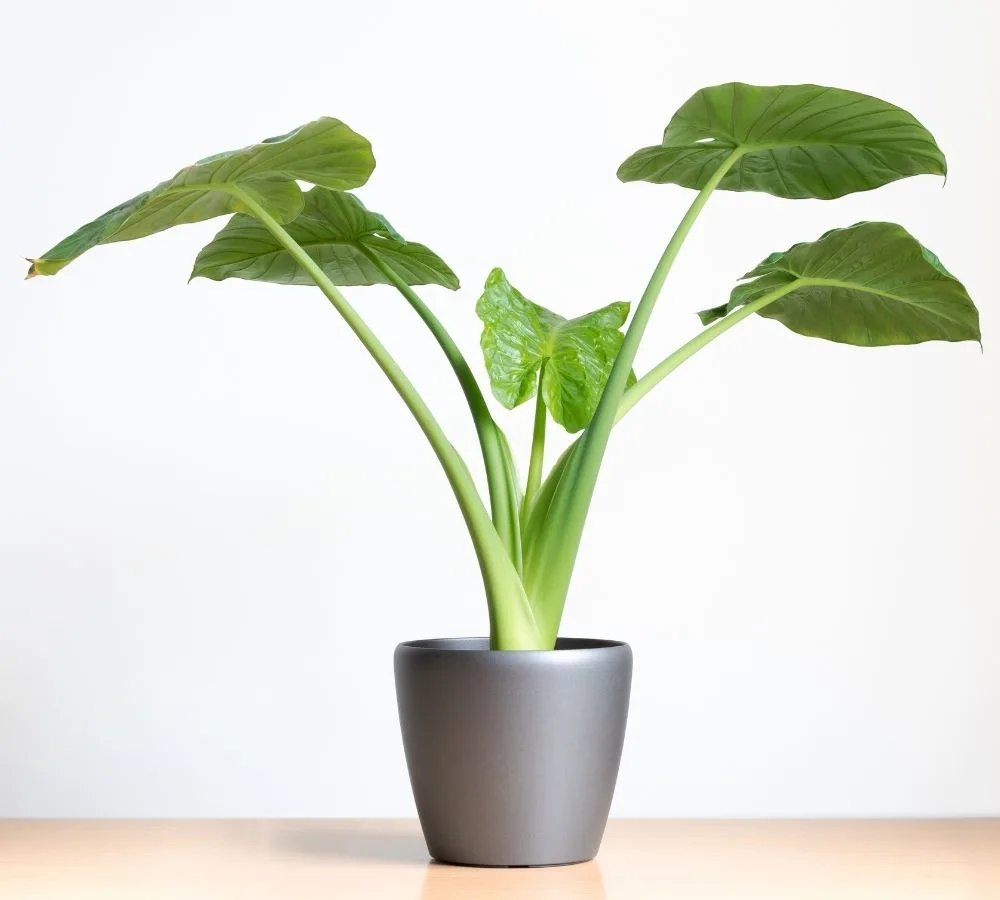
Growing Elephant Ears Outdoors:
Elephant Ear plants can grow outdoors year round in the warmer climate zones 7 to 11.
Elephant ears are beautiful around ponds and love boggy conditions. They do require a lot of space and can get out of hand easily in warm tropical climates. If your Elephant ear plant is happy and well established, it may spread and become invasive.
Keep Colocasias and alocasias out of strong cross winds to avoid battering those large leaves. Sheltered areas out of breezes keep these beauties looking lovely.
These huge leafy Plants are perfect for large understory plantings. Elephants ear are native to the understory of tropical rain forests. They love heat and humidity and evenly moist soil.
However, they need shelter from harsh direct sunlight. Give Elephant ears dappled light and partial shade to protect the leaves from burning and bleaching.
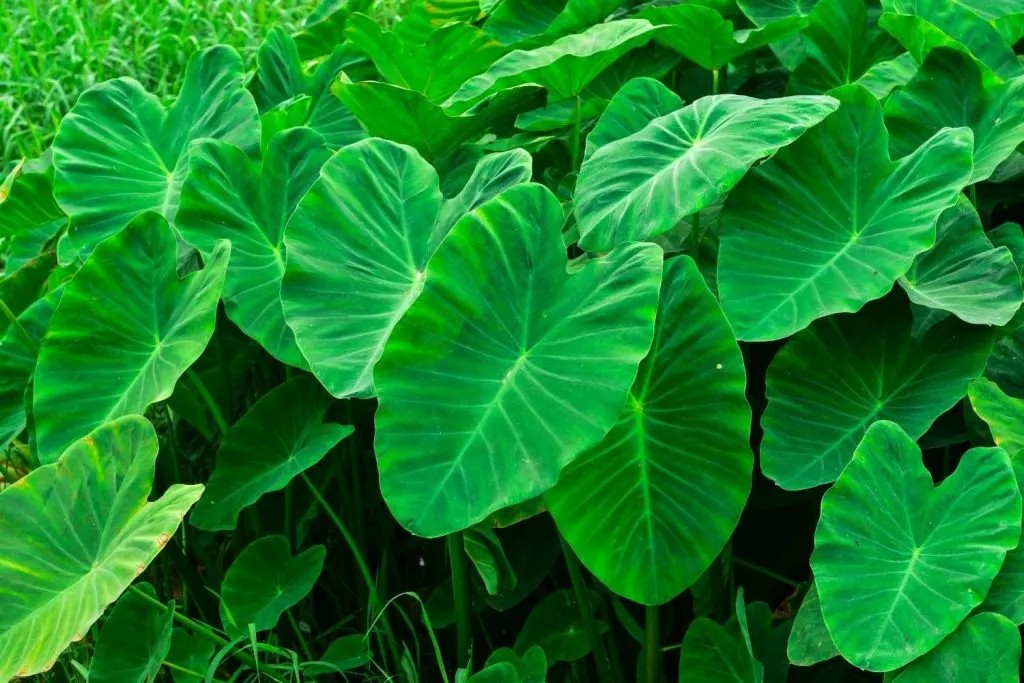
How to Plant Elephant Ears Plant Outdoors:
Elephants ear plant grow from corms. Or you can purchase a young plant and plant it in spring after all danger of frost has passed in colder climates.
Follow these instructions to Plant Elephant ear corms or Plants:
- Choose a Place for your corms. Elephant Ears grow best in moist (even boggy) soil away from harsh direct sunlight and strong cross winds.
- For best results dig in compost or well aged manure to the soil.
- Dig a hole 2 to 4 times the size of the corm (tuber) you are planting.
- Plant the corm so it is covered by only an inch or so of soil. These plants grow best with shallow planting.
- You can plant Elephant ear corms into as much as 6 inches of water for pond plantings.
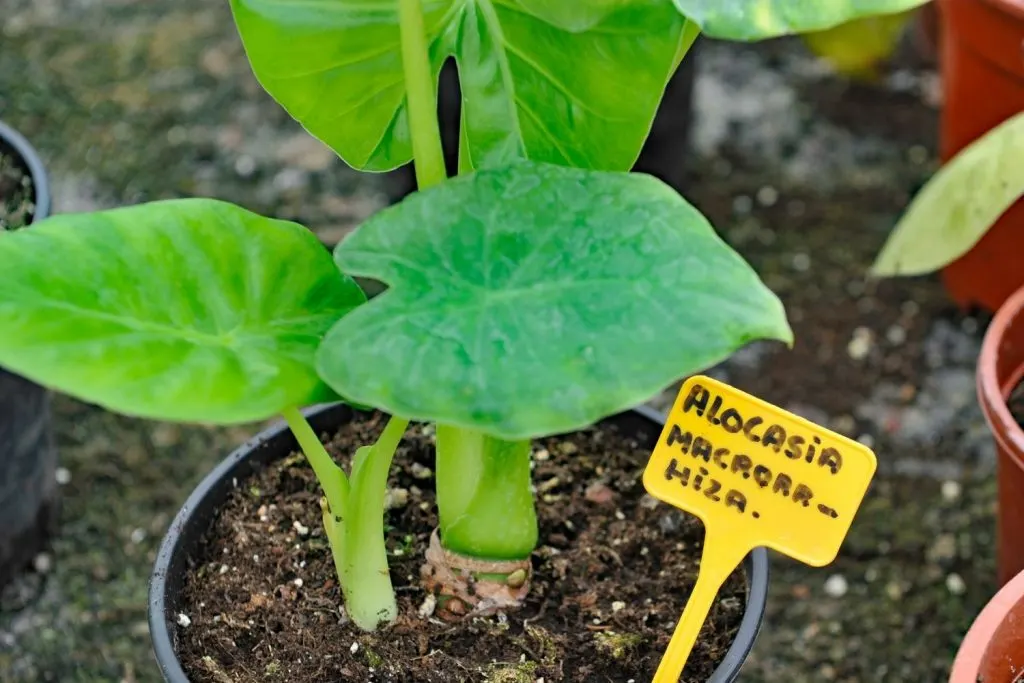
Tips for Growing Elephant Ears Outdoors:
- Place your elephant ears plants correctly. They need to be grown out of high wind areas with partial shade or bright indirect light, in moist soil.
- Prevent the soil from drying out. You may need to water quite a bit if you live in a dry area with dry sandy soil. The roots must be kept moist.
- Fertilize regularly during the growing season. A slow release fertilizer applied monthly works well.
- Mulching with compost will keep the roots cool and moist and reduce soil compaction.
- Prune off dead or unsightly leaves.
Growing Elephant Ears as an Annual Outdoors:
Elephant Ear Plants are frost tender. However, You can plant these tropical beauties as annuals in colder climates. They thrive in temperate gardens with damp soil and lots of humidity.
Elephant ears will not get full size when grown as a seasonal plant since they never get established. But they will still make an attractive foliage plant in your yard for several months of the growing season.
They grow best as noted before when grown in damp soils in partial shade. But if your summer sun is not (over mid 70 F) really hot they can withstand full sun. You may need to water them often if you have a dry summer climate.
Once the growing season is over, you can allow the freezing winter temperatures to kill the plant. Or you can dig up the corms and save them to replant next growing season.
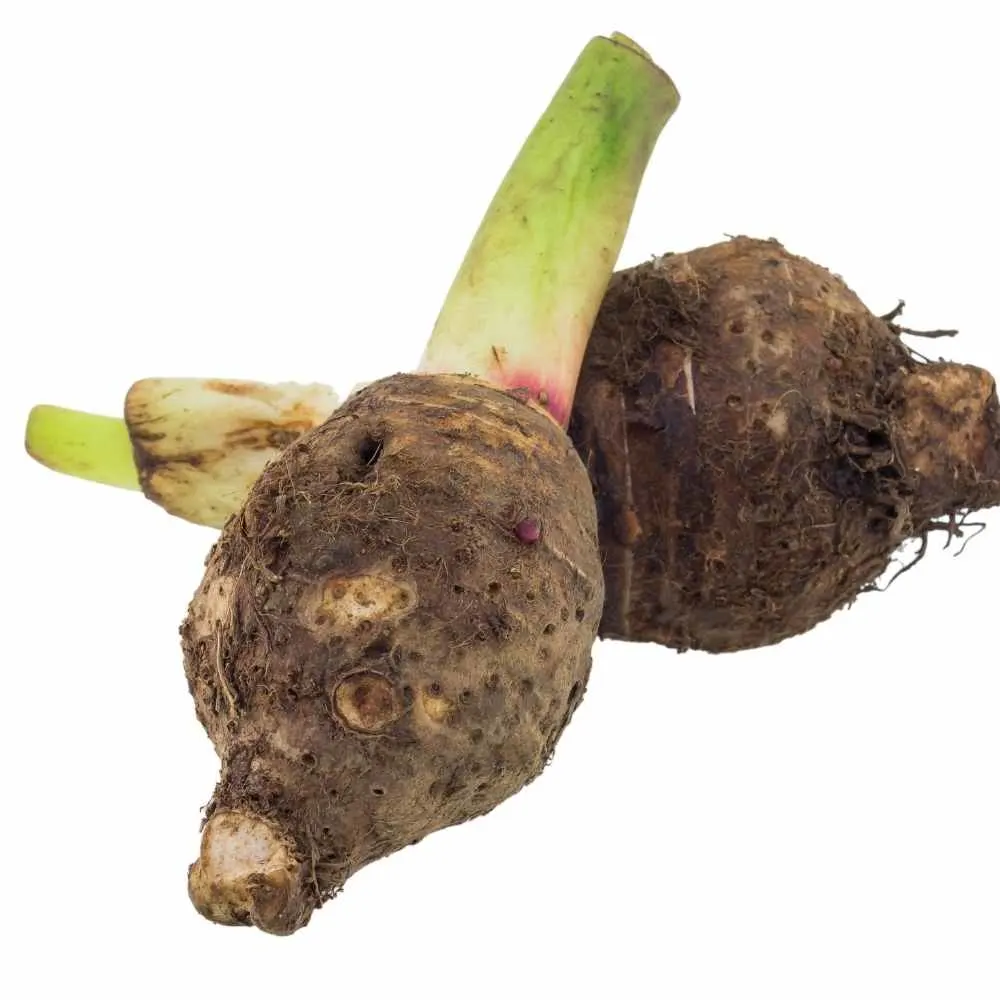
Here’s How to save the corms to store for next spring replanting.
- Dig up the corms after the first frost.
- Cut the leaves away from the corms.
- Allow them to air dry for a day or two.
- Divide the corms and store them in an open bin or paper bag with sawdust, dry potting soil, or shavings at 45 to 50 degrees F.
- Store them away from pests and pets.
- Plant the corms in spring after all danger of frost has passed.
Elephant Ears as Container Plants:
In colder climates you can also grow elephant ears outdoors as a container plant in the summer and bring it indoor to enjoy when temperatures go below 50 degrees F.
Container Plant tips:
- Plant Elephant ears in an appropriate sized pot with good quality potting soil.
- Elephant ears need regular watering and fertilizing when grown in containers.
- Place the planter in partial shade or bright indirect light to avoid leaf burn.
- Keep the plant out of the wind to protect the large leaves from damage.
- Place the planter away from high traffic areas to avoid leaf damage.
- Place planter away from areas with pets, horses or children.
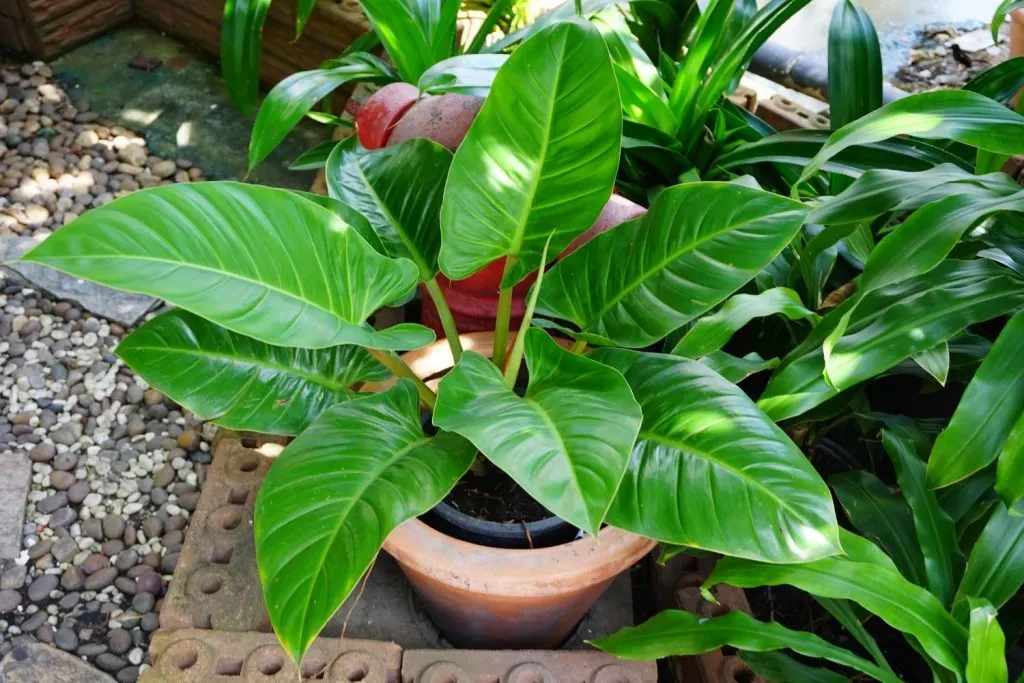
Do Elephant Ears Plants Flower?
Elephant Ear plants do flower. They send up a stalk with a spadix (seed head) hooded with a leaf called a spathe. These flowers are similar to those on a Peace Lily.
The plant usually flowers in late spring to Fall if conditions are just right. So a flowering Elephant ear is a sign it is happy.
However, the flowers are not showy. The Elephant ear foliage is so large it overtakes the flowers. So most people ignore or remove the flowers so the plant energy is devoted to those enormous lovely leaves.
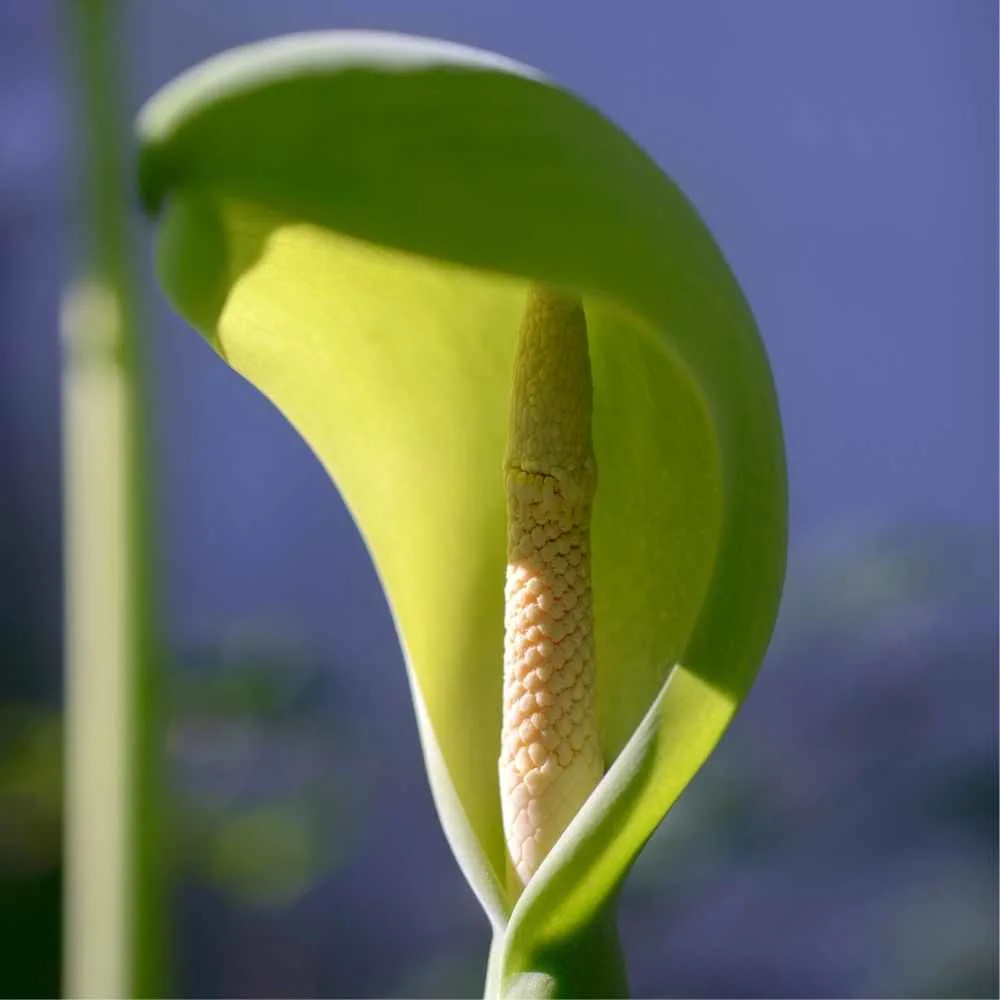
Sourcing Elephant Ear Plants:
Most of your local garden shops will have Elephant Ear Plants. Your local garden shops will carry some elephant ear plants that are good choices for growing in your garden zone outdoors or for all garden zones indoors.
If you are looking for a particular variety, or want to peruse all the various Elephant ear plants available, Shop on ETSY. There are many small garden shops and nurseries that sell though ETSY and can safely send you the plants.
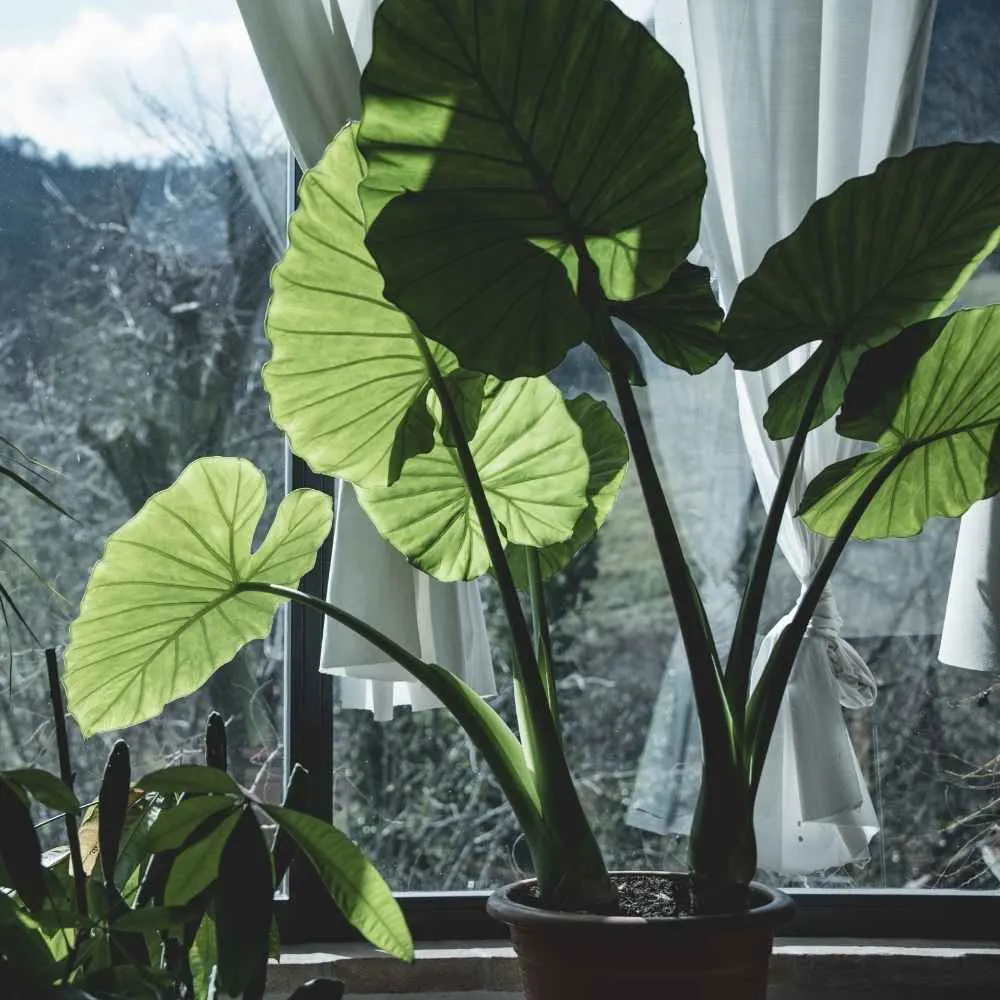
Growing Elephant Ears as an Indoor Plant:
Various upright varieties of the alocasia, like the Regal Shield, and upright varieties of the colocasias can be grown successfully indoors.
Be sure to check the growing conditions and size of the plant before you buy. you want to make sure its a good fit for your home.
The Elephant ear plants make great plants for indoors IF you have the space. Think large. You need a lot of space to show this lovely foliage plant off. Those leaves are HUGE. But it will grow just fine indoors in proper conditions.
Once you find your plant, here is a quick guide to caring for your Elephant plant indoors.
This plant is perfect to fill in a large corner near a window wall or dress up a long boring wall behind a sofa. Elephant ears plants add drama and green lush life to your home.
Elephant Ears love humidity. So a large well lit bathroom or a big bright kitchen or dining area might be perfect for this plant.
| Familiar Names: | Elephant Ear, Elephant Ear Plant, Taro, |
| Scientific Name: | Colocasia, Alocasia, and Xanthosoma genus |
| Plant Family: | Araceae |
| Care Difficulty: | Elephant ears are moderately easy to care for. Give it what it needs and Elephant ear will grow well for you. |
| Temperature: | 50 to 80 degrees F. |
| Watering | Water Elephant ears regularly. Keep soil moist but not saturated. These plants love humidity. |
| Best Soil: | Rich well draining soil. Potting soils mixed with coconut coir or perlite work well. |
| Fertilizing: | Regular applications of fertilizer will ensure best growth and blooming. |
| Lighting: | Bright indirect light |
| Growth: | Elephant ear grows as a large bush, up to 8 feet high in some cases, with huge leaves up to 2 feet in circumference. |
| Flowers: | Elephant ears send up flowers in late spring to Fall. |
How Poisonous Is the Elephant Ear?
According to ASPCA, In its raw form all parts of the elephant ear are poisonous to cats, dogs, horses and people. These plants contain Insoluble calcium oxalates which are toxic when ingested.
Symptoms of Poisoning: Oral irritation, pain and swelling of mouth, tongue and lips, excessive drooling, vomiting (not horses) and difficulty swallowing are all possible results of eating raw Elephant Ear plants.
Keep your elephant ear out of reach of pets and kids and livestock. If you suspect poisoning from elephant ear contact your poison control center or local vet immediately.
Also the sap from the leaves and stems is an irritant that can cause rashes and discomfort. Wash your hands after handling this plant or wear gloves.
It is interesting that ONCE COOKED, this plant, known as Taro, feeds a good part of the world. in Hawaii, it’s made into Poi. And Southeast Asian countries also grow and use taro for food on a large scale.
Elephant Ear Propagation:
Propagation is easiest by division. Divide the corms in winter or early spring. Let the divisions heal and then either store the corms or plant them as desired.
Elephant Ear Plant Indoor Care Guide:
Our printable care guide below describes the best conditions for growing Elephant Ear Plants indoors. They make a good housemate in the proper conditions. Alocasia elephant Ears are upright growing and are preferred for growing indoors.
Elephant ears will claim a significant amount of room in your home. They need a strong indirect light, lots of humidity and warmth to thrive.
Elephant Plant Care Guide
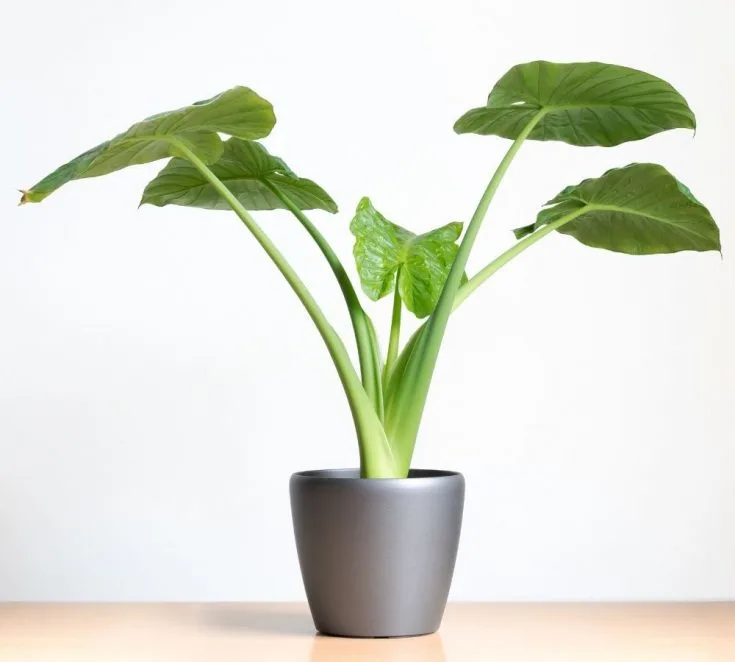
Elephant Ear Plants are stately tropical plants.
This eye catching plant grows as a large bush with tall stems and huge leaves. The varieties usually reach 3 to 6 feet tall and wide in a planter. Leaves can be as much as three feet across. Make sure you have room for this beauty.
This Care Guide will teach you how to keep this plant happy all through the year.
Tools
Instructions
Soil Preference:
- This plant requires a rich well draining soil mix. Elephant ears LOVE and require lots of water. BUT they cannot have constant wet roots. That encourages root rot in containers.
- A mix of potting soil, succulent soil mix and orchid soil mix (look for one with a lot of peat and finer bark mix) will keep the roots happiest.
- Two parts potting soil to two parts succulent mix to two parts orchid bark.
- A heavy soil potting mix is not recommended for this plant.
Pot Size and Type:
- Colocasia Elephant ears need containers about 18 inches wide and 16 inches deep. Or even larger for an outdoor patio plant.
- Any NON porous well drained pot can be used. It MUST have a drainage hole. Terra cotta wicks away too much water from the soil and is not the best pot material for elephant ears.
- Repot every second year or when roots come out the drainage holes on the pot bottom.
Lighting:
- Elephant ears require bright indirect light
- Shield this plant from strong direct light in summer south and west sunny windows. The leaves will burn.
- Tip: Window sheers or blinds can offset some brief periods of high direct light.
Watering:
- Try a watering schedule of every week. Water thoroughly until the water runs out of the pot.
- Watering is best done on a regular schedule so the plant is not over or under watered. Both can cause stress on the plant.
- Never let this plant get wet feet. Elephant ears enjoy moist soil but cannot tolerate heavy compacted wet soil. If the soil is compacted the bottom of the soil can remain wet which encourages root rot and fungus gnats.
Humidity:
- Elephant ears need humidity. Set the container on a pebble tray with water under the pot or provide a humidifier to this tropical plant for best growth and happiness.
- Make sure you are not keeping your Elephant ear next to a heat or air vent. This will dramatically lower the humidity level.
How to Fertilize:
- Elephant ears require regular fertilizing.
- Apply a good quality fertilizer (linked in materials) monthly through Spring and summer.
- Alternately you can use a slow release fertilizer at the beginning of the growing season.
- Decrease feedings by late Fall and allow the elephant ear to rest through the winter months.
Temperature:
- Keep this plant at a low of 50 Degrees F. to upward of 85 Degrees F. It enjoys warmth and humidity.
Pests:
- Elephant ears can be attacked by pests
- Stress by longterm overwatering, poor light, extreme temperatures and soil conditions are contributors to plant stress..
- Spider mites, mealy bugs, scale, thrips and whitefly are the most common houseplant pests you will see.
- Read our post on How to get rid of aphids and other pests with our homemade pesticide soap recipe or neems oil.
- To minimize the possibility of pests be sure to check all nursery plants before bringing them home.
- Quarantine all new plants until you are sure no pests live in them.
How to Propagate:
- This plant is easily propagated through bulb division.
- When you repot the elephant ear look at the bulb (corm). If you see it has grown a new corm off to the side gently pull the corms apart.
- Replant each corm into new soil and a separate pot.
Elephant Ear Toxicity:
- All parts of RAW Elephant ears, the leaves, stems and the bulb, are toxic to pets and humans.
- However, (Taro) also feeds a good part of the world. The bulb and plant parts are edible when cooked. Taro has a long and ancient history as an important food in many cultures.
- Taro must be properly cooked to be safe to eat.
- Toxin- insoluble calcium oxalates. Keep this plant away from dogs, cats and horses. It is also toxic to humans in the raw state.
- While not usually fatal, eating the raw leaves, stem and corm causes oral irritation, pain and swelling of mouth, tongue and lips, excessive drooling, vomiting (not horses), and difficulty swallowing.
More Bushy and Tree size Houseplants:
When you are looking for a focal point in a large room these plants can grow to fill a good sized space and create elegance and drama.
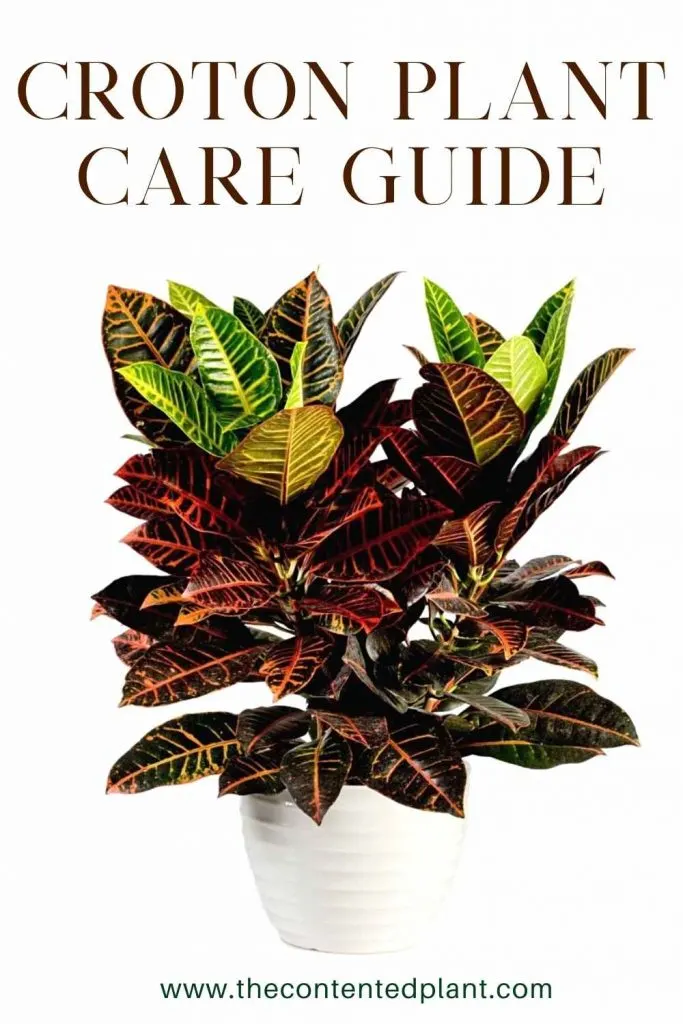
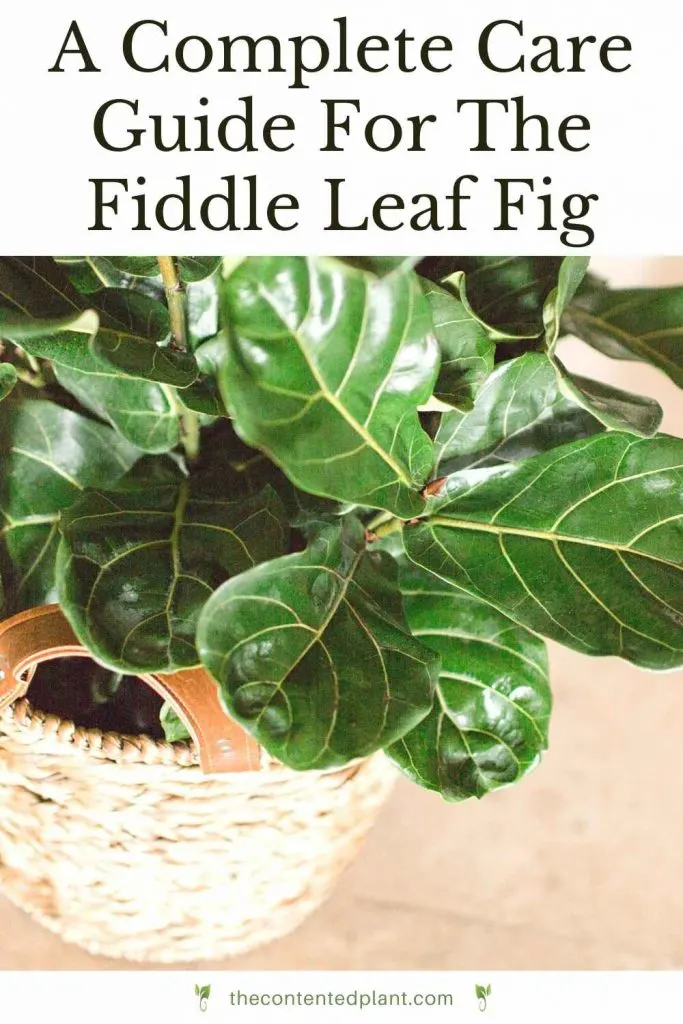
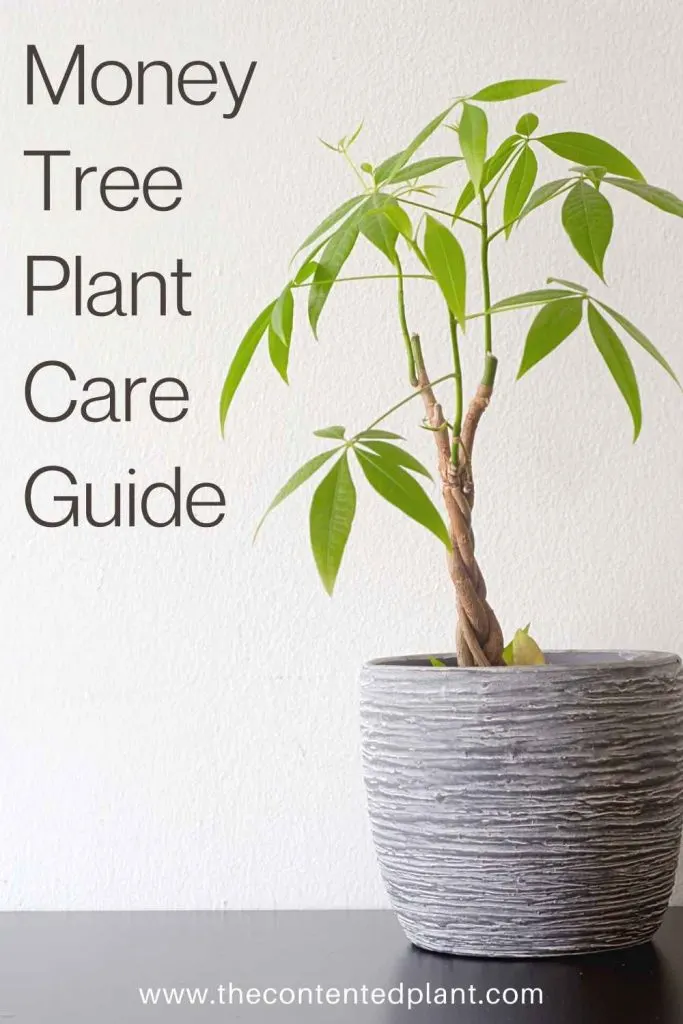
Follow Us:
Find us on YouTube, Instagram , Pinterest and TikTok! We love to Plant chat. We also comment, like and occasionally share your content to our daily stories. We’d love to see your plants. Share your joy in your houseplants. Happy Planting!
Related Content:
Recent Posts:
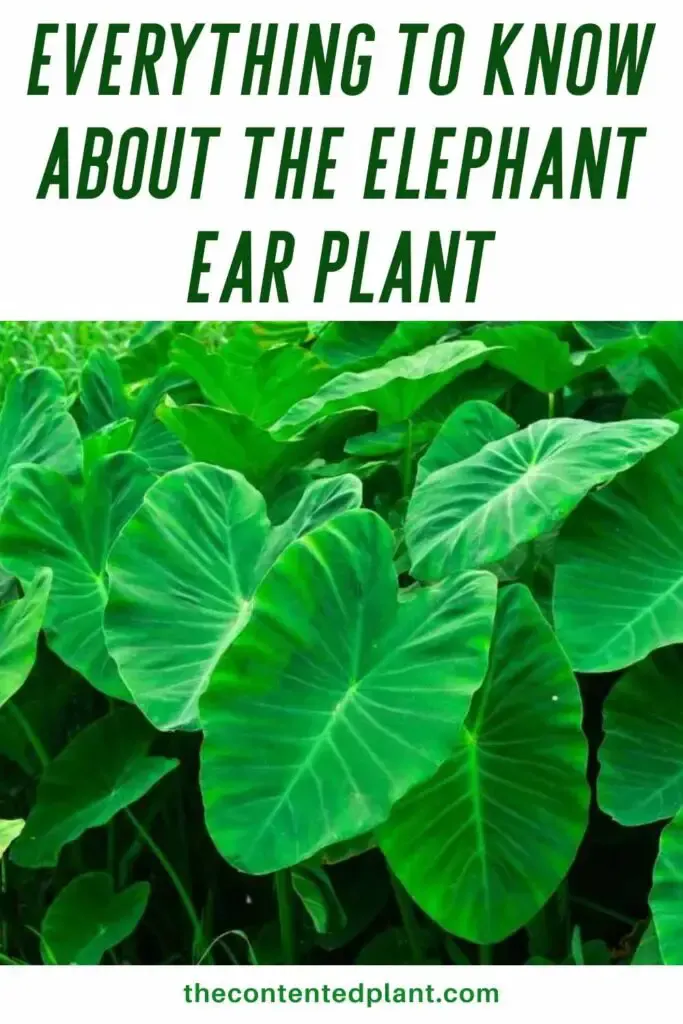
Further Reading: University of Wisconsin, Almanac

Alocasia Regal Shield - The Contented Plant
Tuesday 9th of August 2022
[…] The regal shield plant is commonly known as Elephant Ear due to its large leaves. However, don’t confuse it with the Gigantic colocasia Elephant Ear. […]
Why Houseplants in your Home are beneficial - The Contented Plant
Sunday 19th of December 2021
[…] food. The best kind of plants for this type of benefit are ones with large leaf surface areas (the elephant ear is a good option) or leaves that are very textured and […]